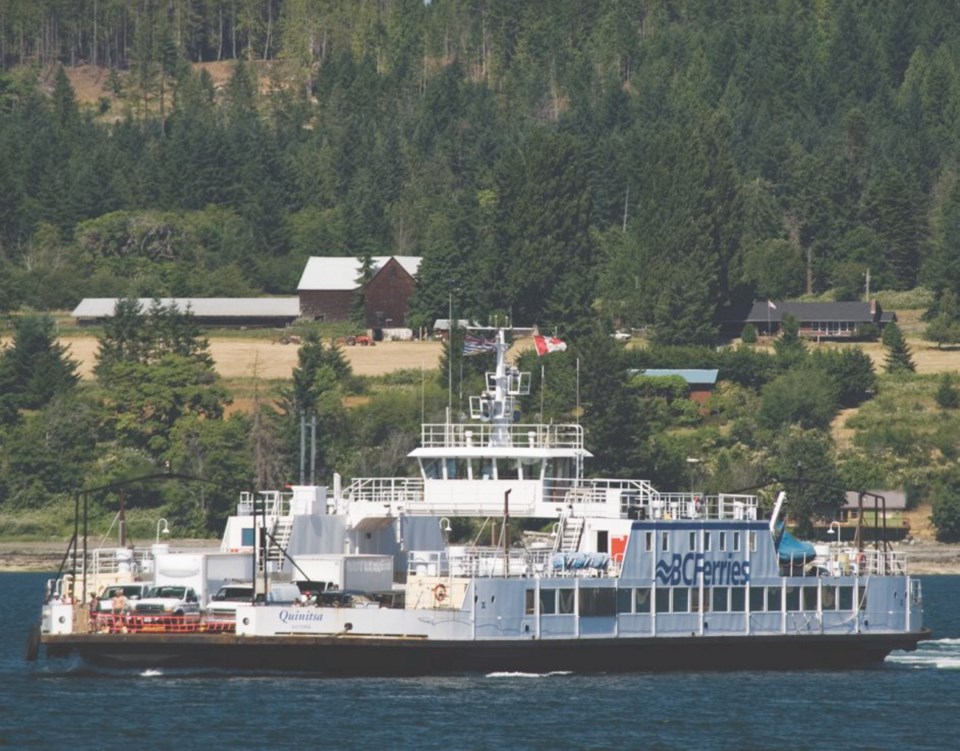Seaspan’s Vancouver Shipyards has won a $15-million contract to build a cable ferry that will run between Buckley Bay on Vancouver Island’s east coast to Denman Island, replacing a conventional vessel.
But unhappy area residents remain opposed to the plan, fearing safety will be compromised and that the ferry will roll significantly in rough weather.
Mark Wilson, vice-president of engineering for B.C. Ferries, said Thursday that while there has been community opposition and apprehension, “we poured a ton of efforts into engineering design and making sure that we can live up to our commitments.”
B.C. Ferries said the new vessel will be as safe and reliable as the current ferry. Cable ferries are a proven technology. About 65 now operate in Canada.
Nearly 10 months was spent on design development prior to issuing a request for proposals. Three shipyards were shortlisted, two in Vancouver and one in Seattle.
“B.C. Ferries followed a rigorous, worldwide competitive tendering process for the new cable ferry to ensure that we receive a high-quality vessel at a competitive price,” Wilson said.
Denman and Hornby islanders are used to riding the 260-foot-long Quinitsa, built in 1977, which will be replaced by the cable ferry. B.C. Ferries will use the Quinitsa as a relief vessel.
Cable ferry service on the 2.2-kilometre route is to start by summer 2015. It will carry up to 50 vehicles and 150 passengers. The vessel will be powered by a hydraulic motor and run along three submerged cables.
The new vessel includes a heated indoor seating area for 60 people, covered outdoor seating for 30 and washroom facilities that are accessible for person with disabilities.
Passengers are not expected to notice a difference in the ride, Wilson said. The cable ferry will have a lot of stability, with its three cables working to dampen motion in wind and waves, he said.
The cable ferry is more energy efficient and is expected to cut fuel costs in half, B.C. Ferries said.
This new ferry is anticipated to save $2 million annually, resulting in more than $80 million during its 40-year lifespan, Wilson said.
New ferry construction is scheduled to begin in June in North Vancouver. It is expected to sustain 60 jobs during the construction period, said Brian Carter, Seaspan Shipyards president.
The aim is to deliver the ferry in the first quarter of next year.
This contract allows the shipyard to transition from barge building to the next level of complexity because of the cable ferry’s more extensive mechanical, electrical and piping systems, he said.
“It’s not new technology but it certainly allows us to hone our skills a little as we prepare for the work under the national shipbuilding procurement strategy.”
Seaspan is planning for decades of anticipated work building large non-combat federal ships.
Hornby Island resident and retired B.C. Ferries senior master Peter Kimmerly is among opponents of the cable ferry, saying it is “under-designed.”
It will rock back and forth in poor weather, Kimmerly said.
“Everybody who lives here knows that it is windy quite often,” he said.
Winds will bathe vehicles in seawater because of the short distance from the water to the deck, he said.
Kimmerly said he has not met anyone on Denman or Hornby Island who support the cable ferry.
When it comes to the existing service, he said, “everybody loves it.”



